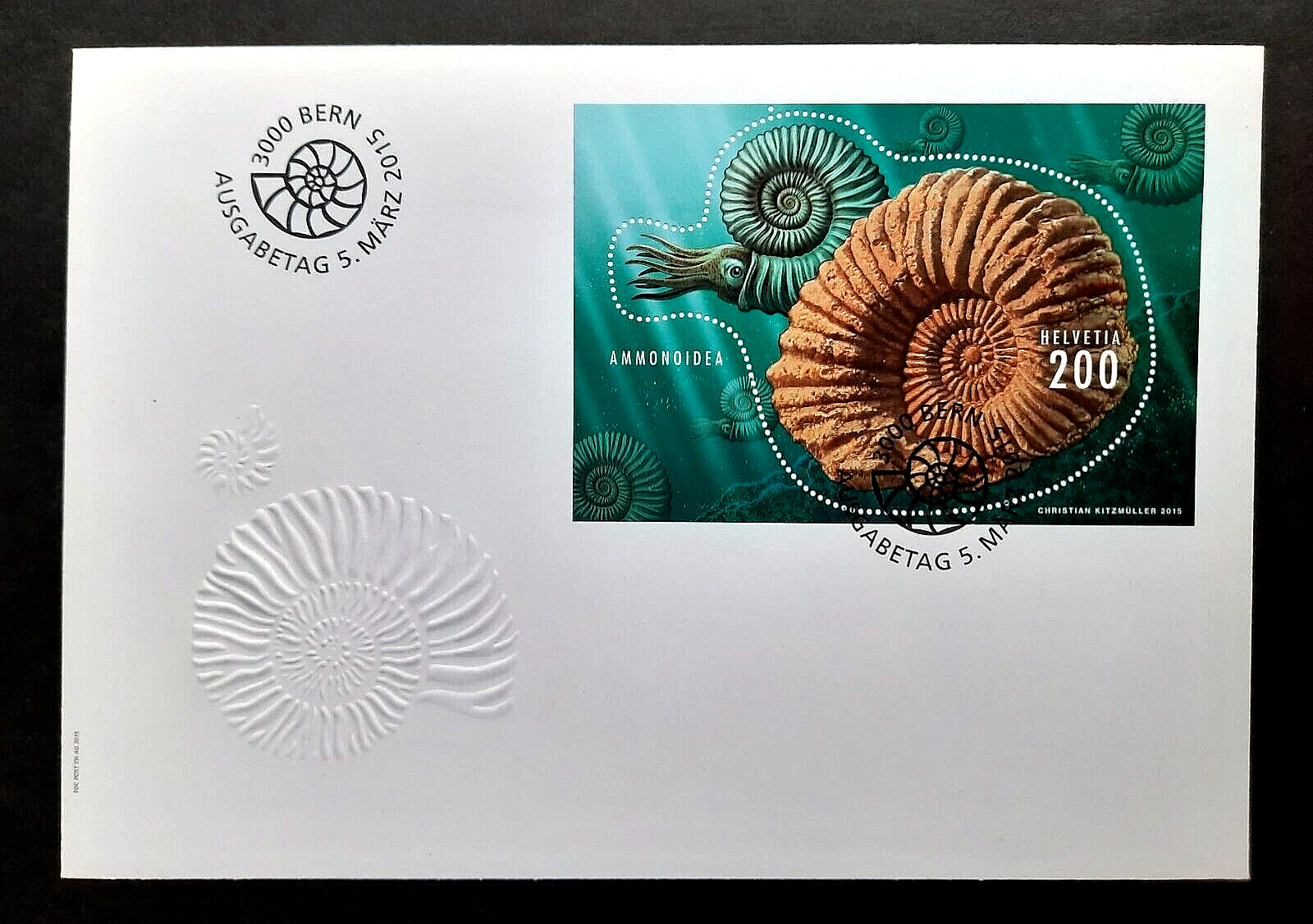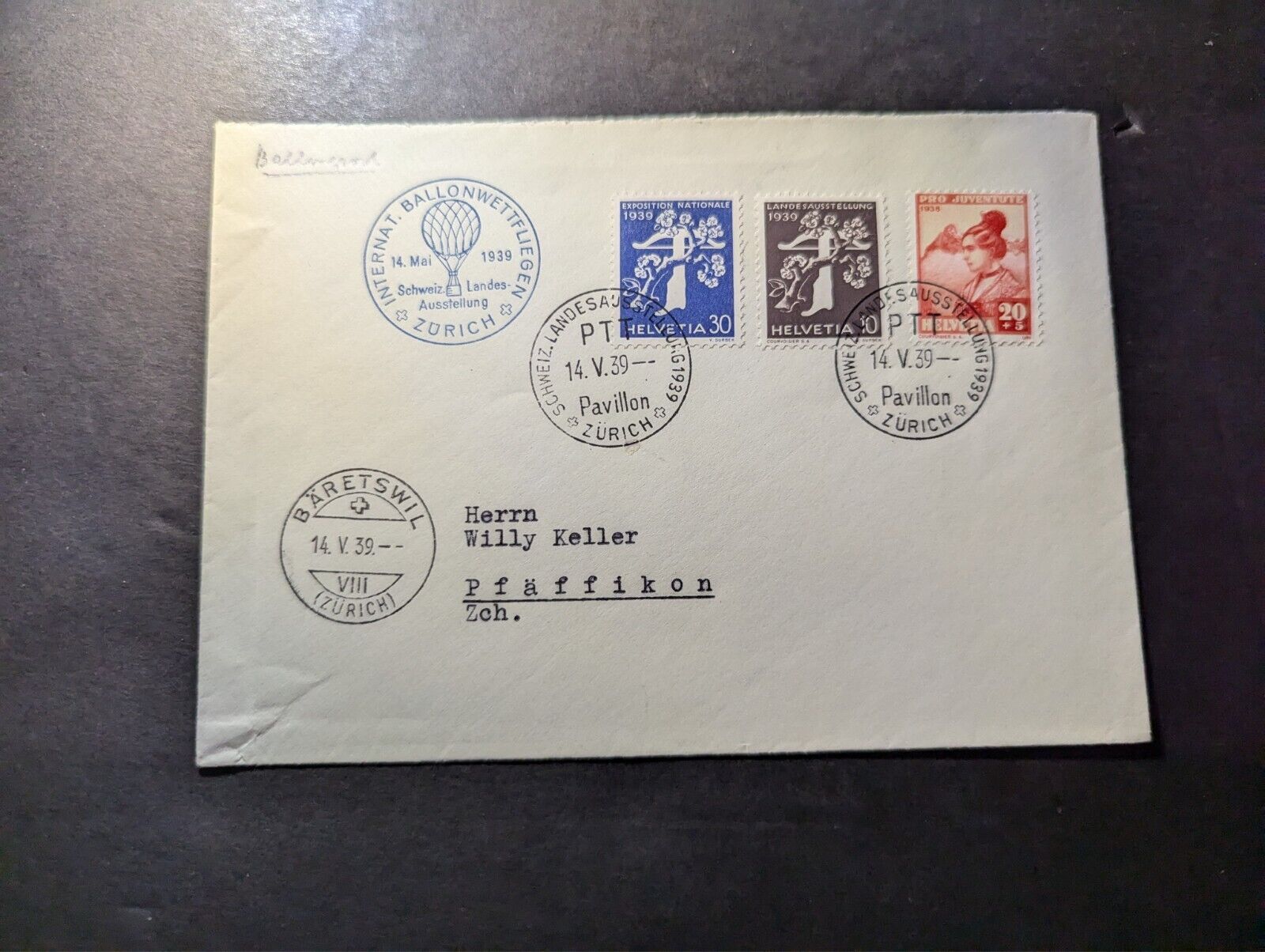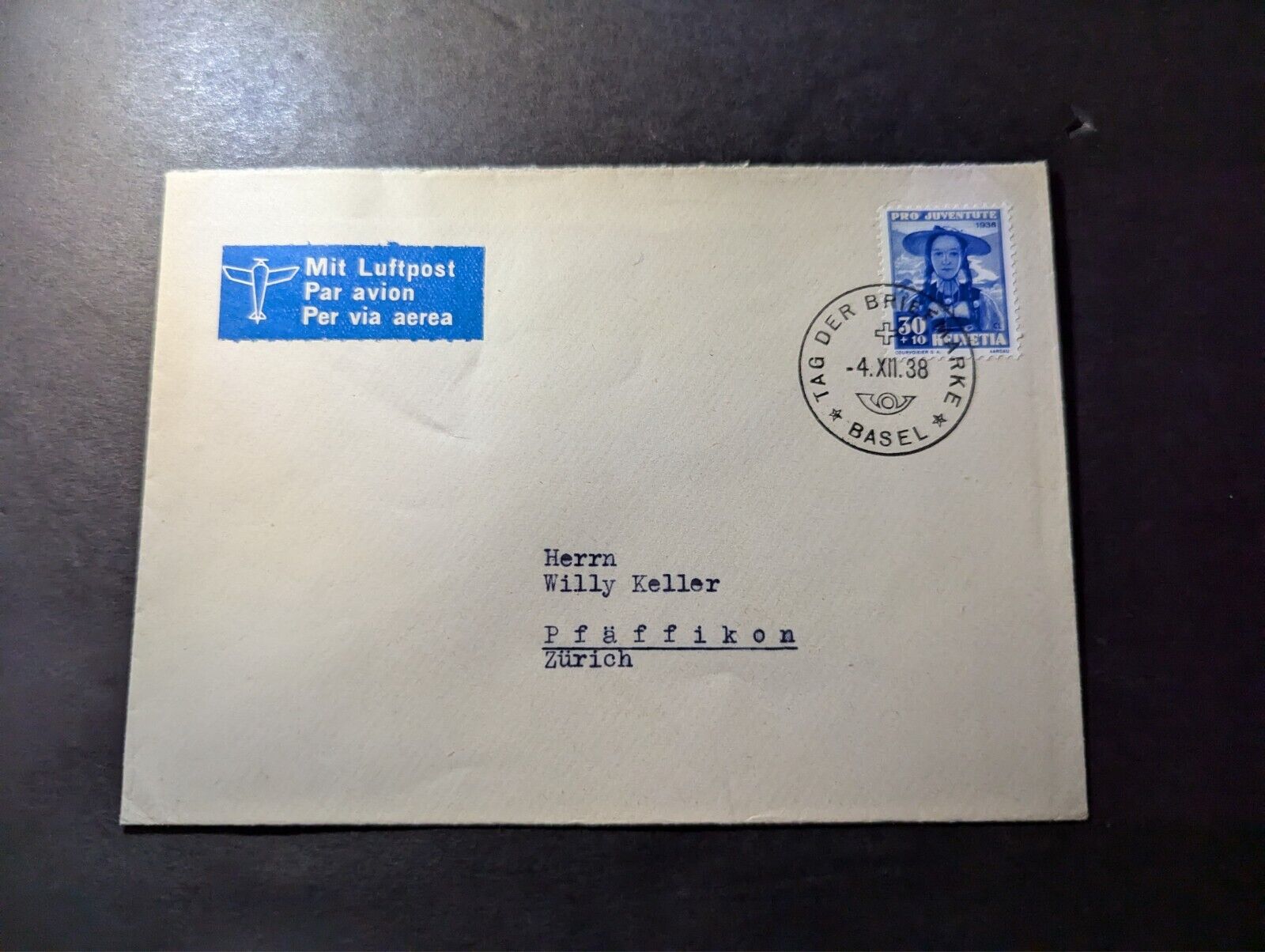-40%
Switzerland - "FOSSILS ~ AMMONITE" Odd - Shaped, Embossed MS FDC 2015
$ 6.33
- Description
- Size Guide
Description
Switzerland-
“
FOSSILS ~ AMMONITE.
”
Odd-Shaped, Embossed Miniature Sheet ~ First Day Cover !
Ammonite
When collectors go scouting in the fossil-rich layers of
the Swiss Jura mountains, they are usually looking for the beautiful spirally coiled ammonites. These fossils are
the remains of creatures related to octopus and squid that first appeared around 400 million years ago, spread throughout the world’s oceans, then died out at the same time as the dinosaurs approximately 65 million years ago.
Ammonites had an outer shell like a snail, but the inner part of the shell had chambers of the kind we can still see today in the living pearly nautilus. The shell protected the soft parts of their anatomy, while air in the chambers created buoyancy. The septa dividing the chambers were tightly folded at the edge, presumably making the shell better able to with- stand water pressure.
If the external shell is no longer present or is removed from
an ammonite, these folds are
marked by ridges known as suture lines.
We know that ammonites are more closely related to today’s squid and octopus
than the pearly nautilus.
We are also familiar with the anatomy of ammonites’ jaws, know that they did not have ink sacs, that they are likely to have fed on small prey, and probably lived a largely hidden existence close to the sea floor.Many questions still remain unanswered, however. Did they have eight or ten ten- tacles, or perhaps up to 100 like the nauti- lus? Did their tentacles have suckers? Did the ammonites have powerful large eyes with lenses like living cephalopods?
There were a huge variety of ammonites. It is estimated that almost 20,000 different species of ammonite existed, although spread over a period of some 335 million
years.
There are ones with disc-shaped and spherical shells, smooth and ribbed shells, as well as ones adorned with spines and tubercles. Each of these numerous types of ammonite existed for only a short period of time. Ammonites therefore make excellent “index fossils” which can be used to date geological strata. On the basis of its characteristic ribs, the ammonite depicted on the stamp is probably a Colombiceras, a species of ammonite that lived during the Cretaceous period around 120 million years ago.
FDI: 5
MARZ 2015, BERN.
(MCD23 ~ Dwn Pls Bx 3).


















